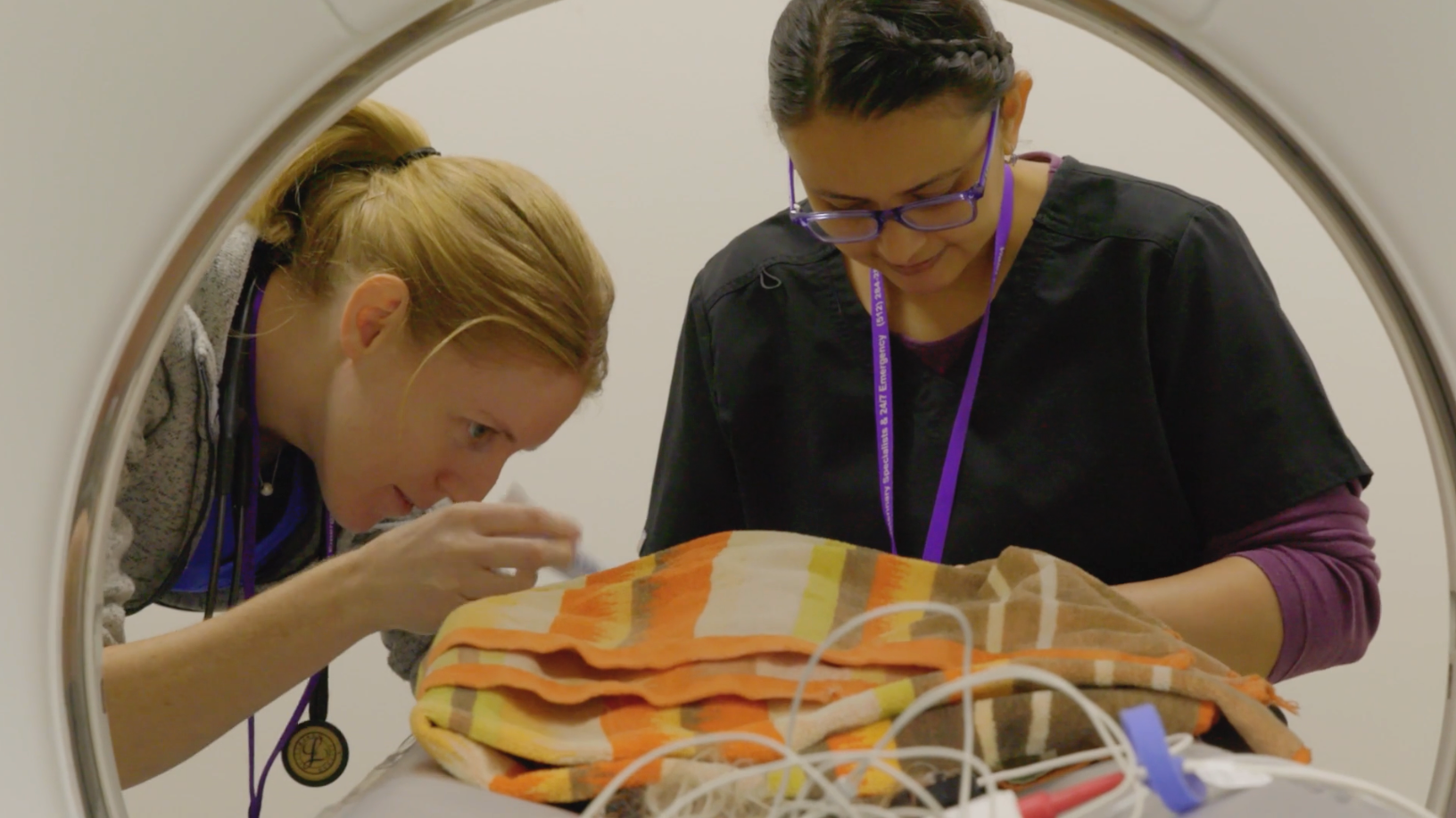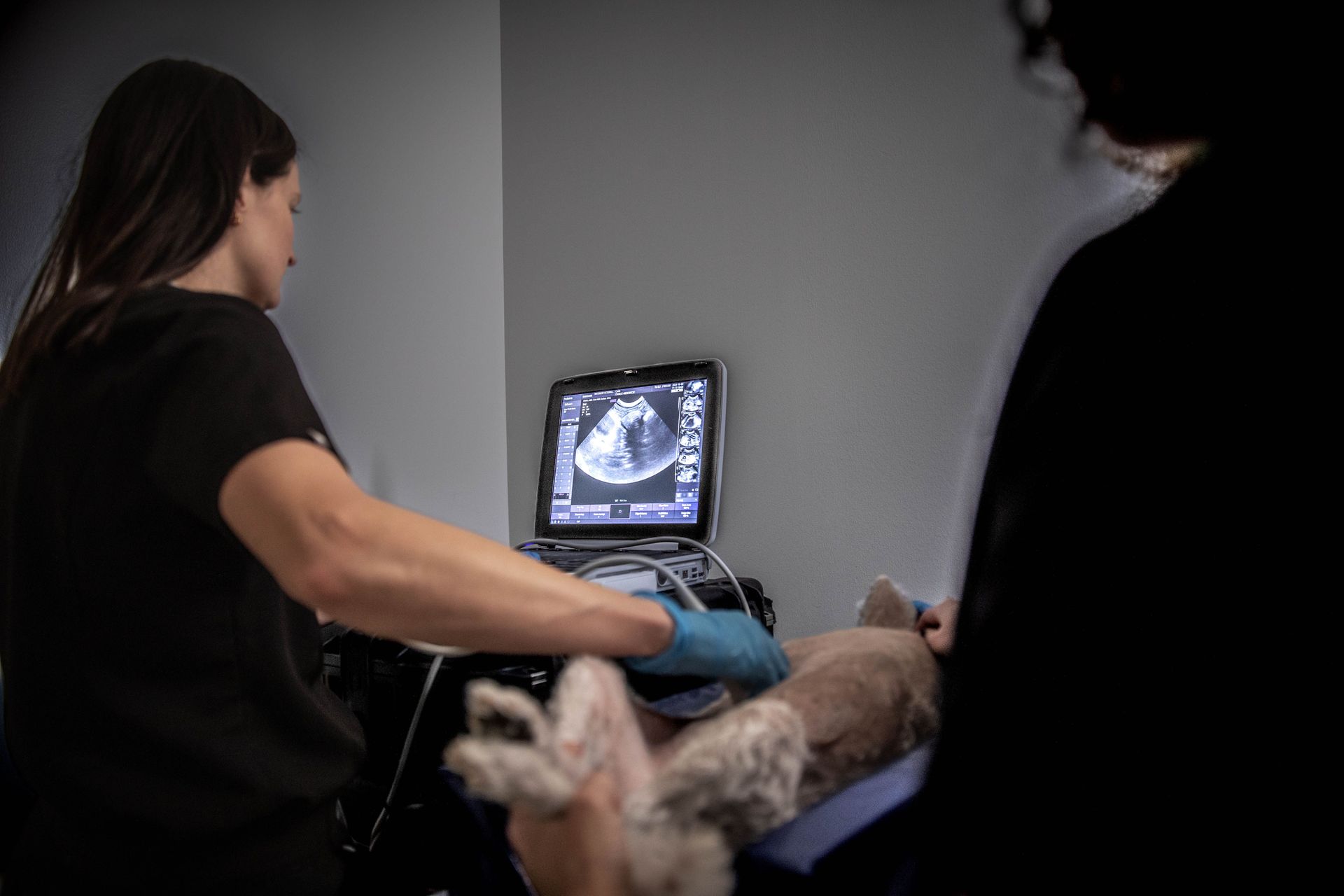Diagnostic Imaging Department
While a good physical examination is a mainstay for patient assessment, our hands and eyes can only tell us so much about what might be happening on the inside. Imaging studies aid doctors in assessing those deeper tissues, helping to diagnose problems, plan procedures, and rule out possible differentials. Violet Crown Veterinary Specialists is proud to house state-of-the art medical imaging equipment, the same or better than you would find at a human hospital.
Digital Radiology
X-rays have been used since the days of Madame Curie to generate phantom images of our tissues, also known as a radiograph. Because x-rays pass through tissues of different densities at different rates, the radiograph gives us an outline of these different tissues as well as changes within the bones. Now digitized and enhanced by computer algorithms, radiographs are still best at showing us bony details and interfaces between densities, and are less effective at showing differences within soft tissues.
Ultrasound
Ultrasound, also called a sonogram, is an imaging modality utilizing sound waves to create an image based on the reflection of those waves back from tissues. Changes in tissue type or density change the reflection and hence the image seen. It is good at evaluating soft tissue structures, such as within the abdomen or heart. As it provides a continuous image, it can also show changes over time, such as the dynamic movement of the heart or flow of blood within a vessel.

Computed Tomography
A CT, or CAT, scan is an advanced three-dimensional imaging study which utilizes x-rays to create a detailed view of the internal tissues in a matter of seconds with much higher sensitivity than a standard radiograph. Contrast agents can be used to highlight tumors, assess function of the kidneys, and diagnose blood vessel abnormalities. While an entire study, which usually includes multiple scans and thousands of images, takes only a matter of minutes, patients must be completely still for the entire study, meaning that anesthesia is required for our veterinary patients.


